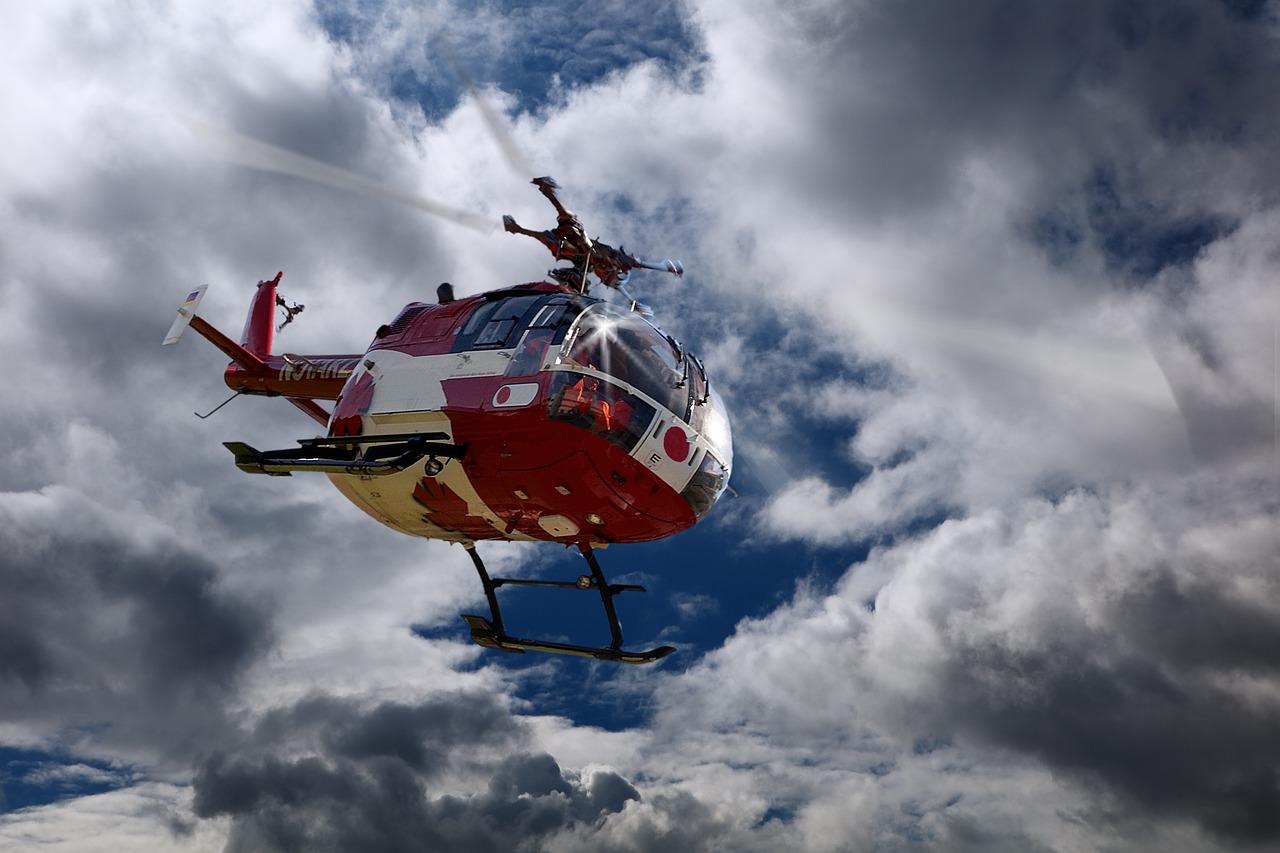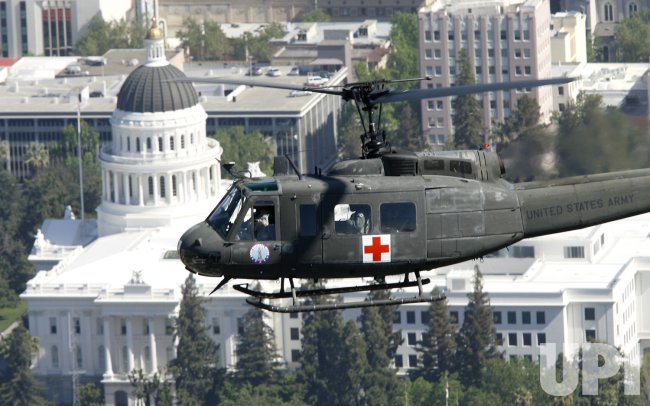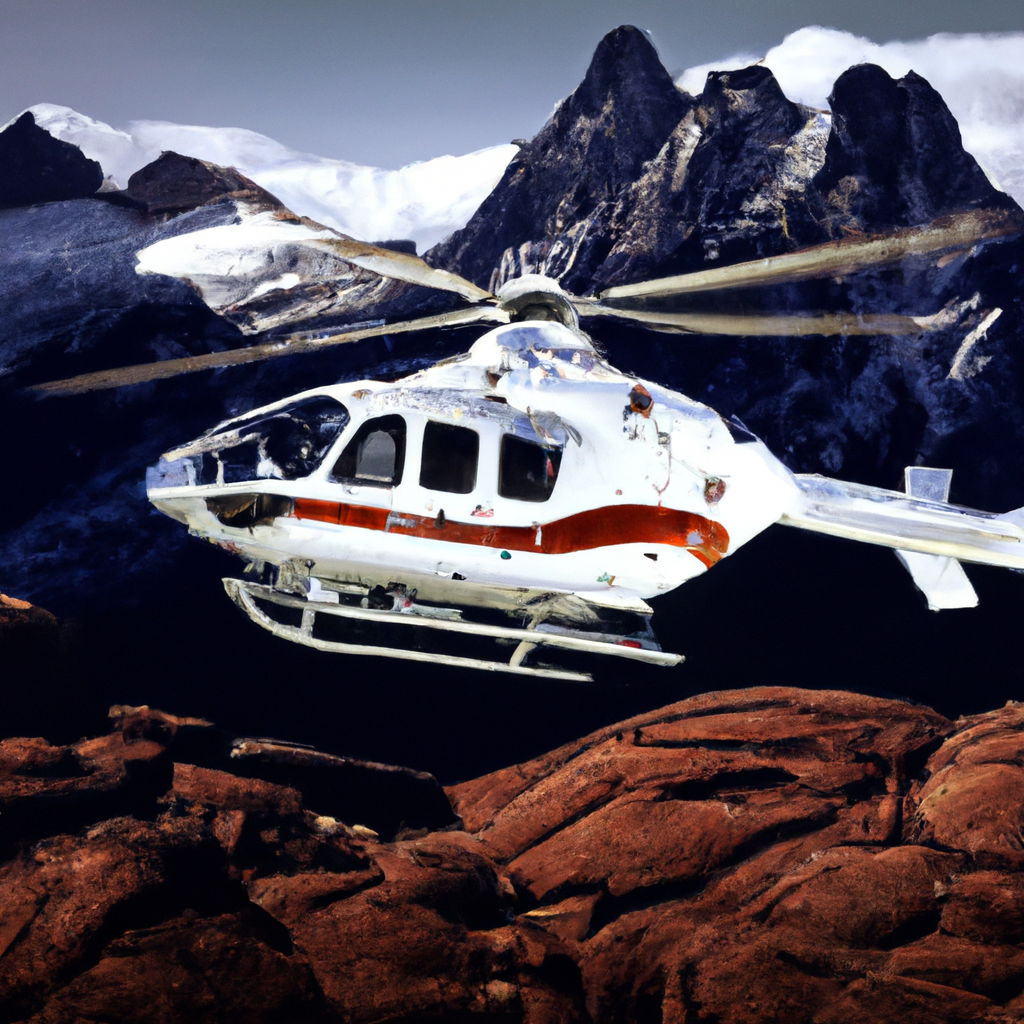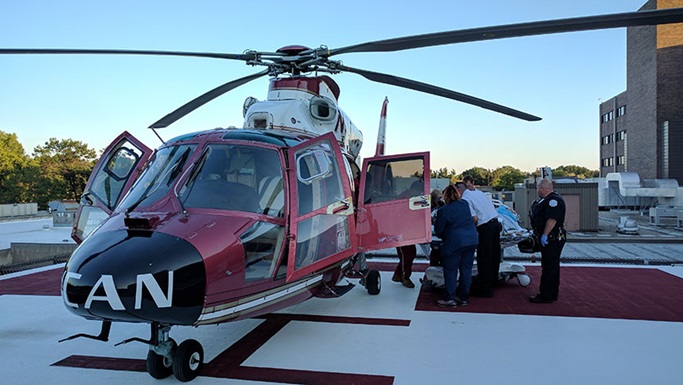When it comes to choosing between a helicopter and a fixed-wing air ambulance, the decision can be a tough one. Both options have their advantages and disadvantages, so it’s important to understand what each brings to the table. Helicopters offer the ability to land in small and confined spaces, making them ideal for urban areas or remote locations with limited landing options. On the other hand, fixed-wing air ambulances are faster and can cover longer distances, making them more suitable for intercity or international transfers. So, which is right for the job? Let’s break it down and explore the factors that can help guide your decision.
Overview
If you ever find yourself in a medical emergency, whether it’s due to injury or illness, getting the right kind of medical transportation can be crucial. In some cases, especially in urgent situations or when distance is a factor, air ambulances provide the fastest and most effective means of transportation. Air ambulances can quickly transport patients to appropriate medical facilities, ensuring timely and specialized care. However, choosing the right type of air ambulance is essential to ensure the best possible outcome for the patient. In this article, we will explore the differences between helicopter and fixed-wing air ambulances, the factors to consider when selecting one, and the various considerations for both patients and healthcare providers.
Helicopter Air Ambulances
Helicopter air ambulances are widely recognized for their speed, maneuverability, and ability to access remote or densely populated areas. These aircraft are often employed in time-sensitive situations, such as trauma cases or when the patient needs immediate medical attention. Helicopters can quickly land in confined spaces, such as accident scenes or hospital helipads, making them highly versatile in emergencies.
However, there are some disadvantages to using helicopter air ambulances. Due to their size and limited space, helicopters may not have sufficient capacity for multiple medical personnel or extensive medical equipment. Additionally, adverse weather conditions can restrict their operations, potentially delaying or even canceling a mission.
Helicopter air ambulances are particularly suited for medical situations that require rapid response and initial stabilization. This includes accidents, trauma cases, cardiac emergencies, and obstetric emergencies where time is of the essence for successful medical intervention.
Fixed-Wing Air Ambulances
Fixed-wing air ambulances, on the other hand, offer distinct advantages over helicopters in certain scenarios. These aircraft, like small jets or turboprop planes, have longer range and endurance capabilities, making them suitable for long-distance and intercontinental medical transfers. Fixed-wing air ambulances are often equipped with advanced medical equipment and have more space, allowing for the transport of specialized medical teams and critical care equipment.
However, due to their larger size and requirements for runway access, fixed-wing air ambulances may have limitations in accessing remote or confined areas. They also have longer response times compared to helicopters, as takeoff and landing procedures can take more time.
Fixed-wing air ambulances are well-suited for medical situations that require long-distance transfers, such as inter-hospital transfers, organ transplants, or international repatriation of patients. These aircraft provide a stable and controlled environment for patients requiring critical care during transport.
Key Differences
When deciding between helicopter and fixed-wing air ambulances, several key differences need to be considered.
Speed and maneuverability:
Helicopters have the advantage of being able to take off and land vertically, giving them superior maneuverability in confined spaces. They can quickly respond to emergencies and reach their destinations faster than fixed-wing aircraft. On the other hand, fixed-wing air ambulances have higher cruising speeds, allowing for more rapid long-distance transfers.
Range and endurance:
Fixed-wing air ambulances have significantly longer range and endurance compared to helicopters. They can fly at higher altitudes and for longer durations, enabling them to cover vast distances without refueling. Helicopters, however, have limited range and endurance, making them more suitable for short-distance transfers.
Medical capabilities:
Fixed-wing air ambulances usually have more space and specialized medical equipment onboard, allowing for the transport of critical care teams and advanced medical interventions. Helicopters, while equipped with basic medical equipment, may have limitations in terms of space and carrying capacity for extensive medical teams.
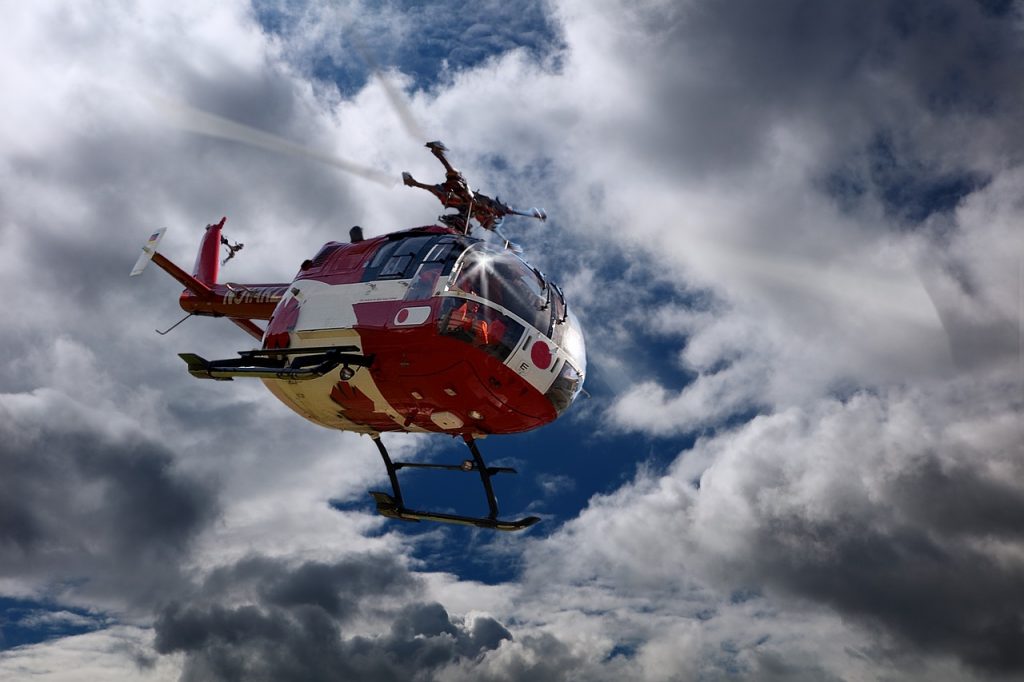
Considerations for Patients
When considering air ambulance transportation, patients need to take various factors into account.
Comfort and space:
Fixed-wing air ambulances generally offer more comfort and space for both patients and accompanying family members. These aircraft often have fully equipped medical cabins and may even provide amenities such as beds, seating for family members, and in-flight entertainment. Helicopters, due to their smaller size, offer limited space and amenities.
Availability and response time:
Helicopters, being smaller and more maneuverable, can often reach the location faster than fixed-wing aircraft. However, their availability can be impacted by adverse weather conditions, whereas fixed-wing air ambulances have a better chance of flying in various weather conditions. Response time is a critical factor in emergencies, and patients should consider the availability and response time of the air ambulance service before making a decision.
Financial considerations:
The cost of air ambulance services can vary depending on several factors, including the distance traveled, medical equipment required, and the type of aircraft used. Patients should consider their insurance coverage, as well as any additional costs that may arise, when selecting an air ambulance service. It is crucial to consult with insurance providers and air ambulance service companies to better understand the financial implications.
Considerations for Healthcare Providers
Healthcare providers must also consider specific factors when selecting an air ambulance service for patient transfers.
Availability and accessibility:
Air ambulance services must be readily available and accessible for healthcare providers to ensure quick patient transfers when needed. The service provider’s coverage area, availability of aircraft, and operational readiness play crucial roles in meeting the healthcare provider’s needs.
Specialized medical staff:
Depending on the patient’s condition and medical requirements, healthcare providers may need to ensure that the air ambulance service has specialized medical staff on board. These staff members can provide critical care during the transfer and ensure optimal outcomes for the patient.
Patient transfer and medical equipment:
The air ambulance service should be equipped to handle the specific needs of the patient being transferred. This includes having the necessary medical equipment, such as ventilators, defibrillators, or neonatal incubators, and trained personnel to operate them. The service provider’s ability to provide seamless patient transfer, including ground transportation to and from the aircraft, is also crucial.

Operational Considerations
There are several operational considerations involved in air ambulance operations.
Terrain and environment:
The type of aircraft chosen should be suitable for the operational environment and terrain. Helicopters are typically better suited for accessing remote or rugged terrain, while fixed-wing aircraft require a sufficient runway for takeoff and landing.
Landing and takeoff requirements:
Helicopters have the advantage of vertical takeoff and landing capabilities, allowing them to access locations with limited space, such as accident scenes or hospital helipads. Fixed-wing air ambulances, however, require a suitable runway for landing and takeoff, which may limit their ability to reach certain areas.
Weather conditions:
Adverse weather conditions, such as high winds, fog, or heavy rain, can impact the operations of air ambulances. While helicopters are generally more flexible in adverse weather conditions, they still have limitations. Fixed-wing air ambulances, due to their higher cruising speeds and altitude capabilities, may have better resilience in inclement weather.
Regulations and Safety
Air ambulance services are subject to rigorous regulations and safety standards to ensure patient safety.
Regulatory bodies and certifications:
Air ambulance services must adhere to specific regulations and certifications to operate. These may include certifications from regulatory bodies such as the Federal Aviation Administration (FAA) or the European Aviation Safety Agency (EASA), as well as compliance with medical transport guidelines.
Safety standards and inspections:
Air ambulance operators must maintain strict safety standards and undergo regular inspections to ensure the airworthiness of their aircraft. These inspections cover various aspects, including aircraft maintenance, crew qualifications, medical equipment checks, and documentation compliance.
Accident rates and statistics:
While air ambulance services strive to provide safe and efficient transportation, it is essential to consider accident rates and statistics when selecting a service. Patients and healthcare providers should inquire about the service provider’s safety record, including any incidents or accidents, to make an informed decision.
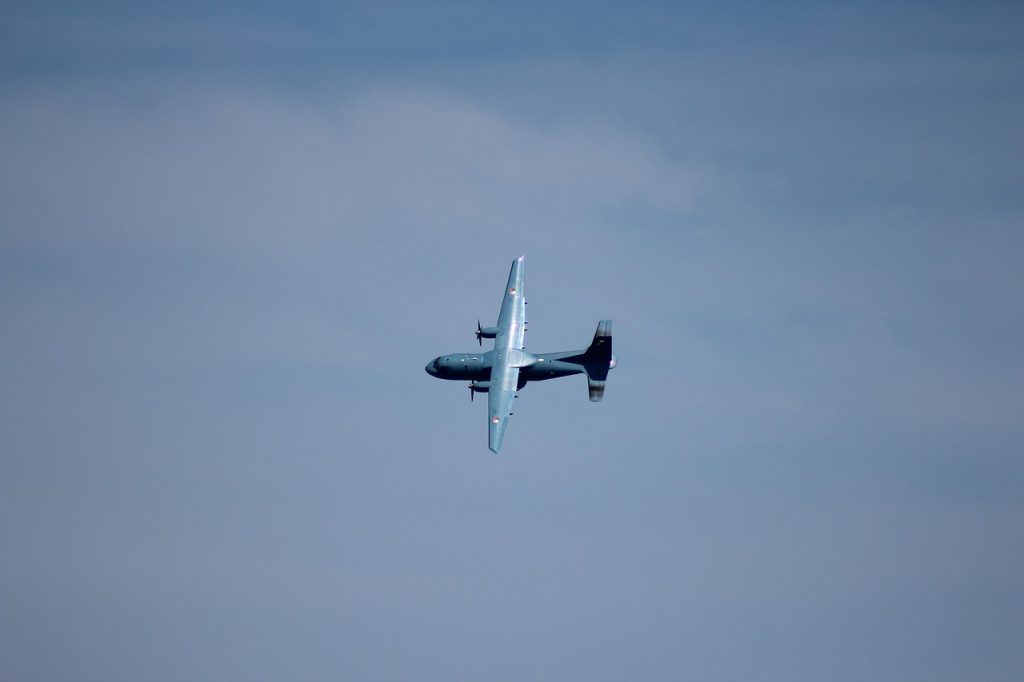
Cost Analysis
Understanding the factors that affect the cost of air ambulance services is crucial for patients and healthcare providers.
Factors affecting the cost:
Several factors contribute to the overall cost of air ambulance services. These include the type of aircraft used, distance traveled, medical staff and equipment requirements, ground transportation, and any additional services provided, such as language interpretation.
Insurance coverage:
Patients should assess their insurance coverage and understand the extent to which air ambulance services are covered. Different insurance plans may have varying levels of coverage for air ambulance transportation, and patients should consult with their insurance providers to determine their financial obligations.
Comparative cost analysis:
Patients and healthcare providers should consider undertaking a comparative cost analysis of different air ambulance services to ensure they are receiving the best value for the services provided. Factors such as reputation, experience, medical capabilities, and response times should be weighed against the cost to make an informed decision.
Conclusion
Choosing the right type of air ambulance is essential to ensure the timely and efficient transportation of patients in medical emergencies. Helicopters and fixed-wing air ambulances offer different advantages and are suited for various medical situations. Patients and healthcare providers need to consider factors such as speed, range, medical capabilities, comfort, availability, response time, and financial considerations before selecting an air ambulance service. Consulting with medical professionals and specialists in air ambulance transportation is crucial since they can provide valuable guidance based on the specific needs and circumstances of the patient. By carefully considering these factors, patients and healthcare providers can make informed decisions and ensure the best possible outcomes for those in need of air ambulance services.
